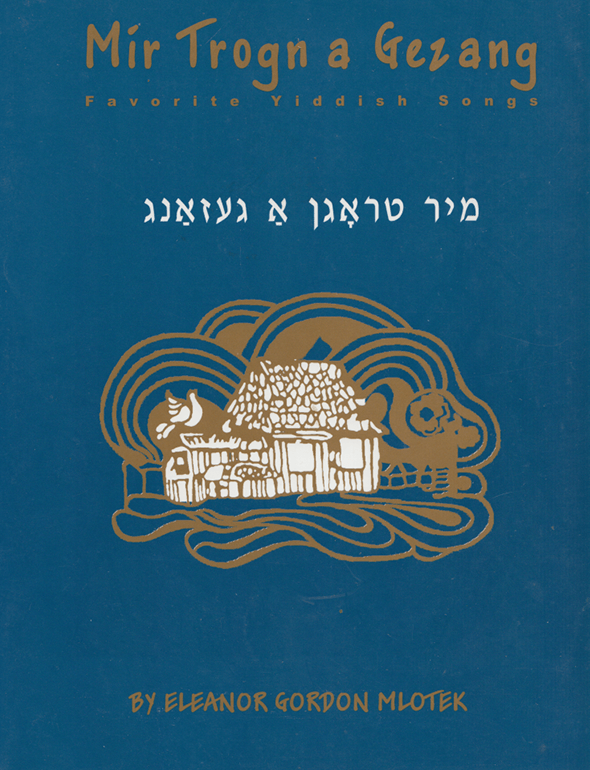Part of a folk song, published in Der Jude in 1917. A soldier’s lament from the First World War.

That far-off year has arrived, oh, woe is me!
They have taken me and made me a soldier, oh, woe is me!
In the fields, the green fields, oh, woe is me!
there lies a dead soldier, oh, woe is me!
A bird comes flying, oh, woe is me!
and perches on my grave, oh, woe is me!
Who will cry and mourn for me, oh, woe is me!
Who sill say kaddish for me, oh, woe is me!
Dos fertsnte yor iz ongekumen, vey, oy vey!
Hot men mikh far a zelner genumen, vey, oy vey!
Oyf di felder, grine felder, vey, oy vey!
Dortn ligt a gehargeter zelner, vey, oy vey!
Kumt a foygl on tsu flien, vey, oy vey!
Shtelt zikh oyf mayn keyver ruen, vey, oy vey!
Ver vet nokh mir veynen un klogn, vey, oy vey!
Ver vet nokh mir kadish zogn, vey, oy vey!
דאָס פֿערצנטע יאָר איז אָנגעקומען, װײ, אױ װײ!
האָט מען מיך פֿאַר אַ זעלנער גענומען, װײ, אױ װײ!
אױף די פֿעלדער, גרינע פֿעלדער,װײ, אױ װײ!
דאָרטן לינט אַ געהרגעטער זעלנער, װײ, אױ װײ!
קומט אַ פֿױגל אָן צו פֿליִען, װײ, אױ װײ
שטעלט זיך אױף מײַן קבֿר רוען, װײ, אױ װײ!
װער װועט נאָך מיר װײנען און קלאָגן, װײ, אױ װײ!
װער װעט נאָך מיר קדיש זאָגן, װײ, אױ װײ!
Song Title: Dos Fertsnte Yor

First published in 1972, Mir Trogn A Gezang: Favorite Yiddish Songs was reprinted six more times (in 1977, 1982, 1985, 1987, 1988, 2000) due to popular demand. The songs in this anthology represent a sampling of beloved folk and well-known Yiddish songs, many of which are scattered in various song collections; some appear in very rare and inaccessible collections; and some were never before published. Folk songs comprise about a third of this volume and were selected mainly on the basis of popularity and sometimes for their historic significance. Needless to say, they are only representative of the vast, rich treasure of Yiddish folk material. The selection was made not only on the basis of personal preference, but in the knowledge they are favorites of many who sing these songs. Most of the songs represent the repertoire that was sung at Yiddish summer camps, May 1st demonstrations and at social gatherings. Many songs were introduced to American Jewry by Jewish immigrants who came to the United States after World War II, for whom these songs had been favorites in Poland and other East European communities destroyed by the Nazis.